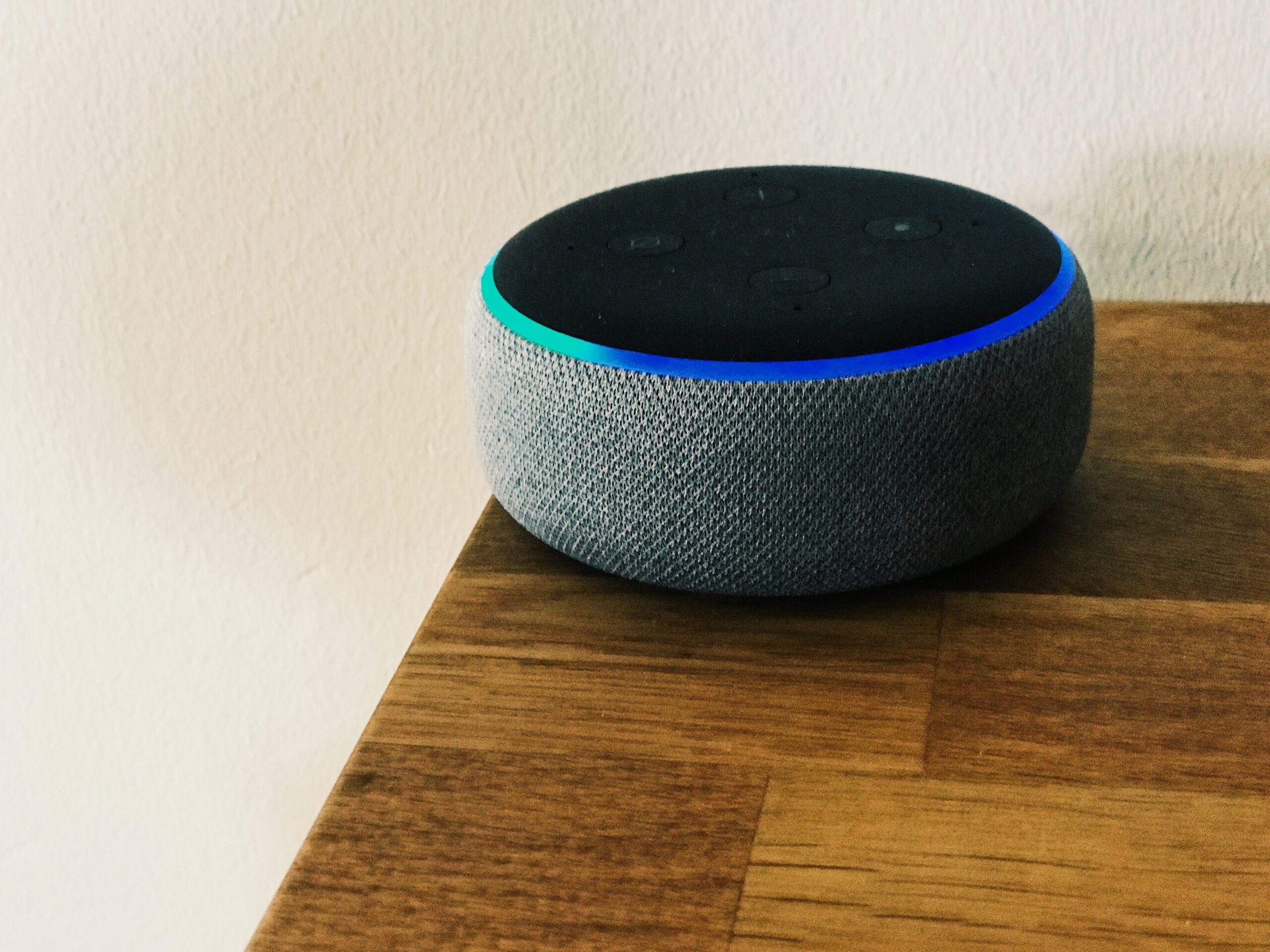The eCommerce industry has experienced rapid growth in recent years, with sales reaching over $4.28 trillion in 2020 alone. Moreover, this figure is expected to reach about $5.4 trillion by 2022. So what eCommerce future trends are going to put this industry on the path of this massive growth?
The emergence of the pandemic has wreaked havoc on industries the world over. But, its effect on the eCommerce industry has been quite the opposite. Since the onset of the COVID-19 pandemic, the worldwide eCommerce industry has received quite a boost. Moreover, on a technological level, the experience of an eCommerce store is growing steadily. With AI and ML powered personalisation and augmented reality, viewed as the future of eCommerce technology.
Why?
With social distancing norms in play, people now prefer shopping online over physical brick-and-mortar stores. According to Statista, the biggest driver of online shopping is the convenience of receiving these packages via home delivery. Furthermore, this behavioural change and development towards online shopping will only grow and gain traction. This hike in eCommerce isn’t limited to B2C businesses alone; B2B eCommerce sales in the US alone are to hit approximately $1.2 trillion in 2021.
According to the Global Web Index Survey, 48.8% of people said they would prefer to shop online even in the post-pandemic era.
But is convenience the only factor for this growth?
The answer is NO. There are various eCommerce trends that have fueled the growth of this sector. But what are the emerging trends that are at the forefront of this boom? Moreover, what is the future of eCommerce? And most importantly, what is the future of eCommerce technology to look out for? Let’s take a look!
 Artificial intelligence and machine learning have taken the world by storm! And their usage trends in the eCommerce industry are no different. Companies are well aware of the fact that personalisation is the future of ecommerce technology. And to build upon that, they are heavily investing in building and implementing AI and ML-powered algorithms into their eCommerce platforms. This capability enables companies to provide a personalised shopping experience to their customers.
This personalised and targeted product showcasing benefits not only the customer but also the business. Moreover, companies are increasingly focusing on building databases based on consumer behaviour using AI. Machine learning, too, analyses and learns a user’s buying behaviour to make compelling and practical recommendations. The tight integration and implementation of both these tools allow for effective personalisation of the platform.
In addition to personalisation, AI and ML also power virtual assistants. With virtual assistants present in almost all consumer electronics devices, people have become accustomed to their usage. Virtual assistants provide users with the ability to make online purchases through a single instruction. This hassle-free capability has enormous potential and can give a significant boost to the eCommerce industry. Moreover, the Coupon Follow’s Millennial Shopping states that over 45% of millennials already use voice technology for their shopping activity.
Artificial intelligence and machine learning have taken the world by storm! And their usage trends in the eCommerce industry are no different. Companies are well aware of the fact that personalisation is the future of ecommerce technology. And to build upon that, they are heavily investing in building and implementing AI and ML-powered algorithms into their eCommerce platforms. This capability enables companies to provide a personalised shopping experience to their customers.
This personalised and targeted product showcasing benefits not only the customer but also the business. Moreover, companies are increasingly focusing on building databases based on consumer behaviour using AI. Machine learning, too, analyses and learns a user’s buying behaviour to make compelling and practical recommendations. The tight integration and implementation of both these tools allow for effective personalisation of the platform.
In addition to personalisation, AI and ML also power virtual assistants. With virtual assistants present in almost all consumer electronics devices, people have become accustomed to their usage. Virtual assistants provide users with the ability to make online purchases through a single instruction. This hassle-free capability has enormous potential and can give a significant boost to the eCommerce industry. Moreover, the Coupon Follow’s Millennial Shopping states that over 45% of millennials already use voice technology for their shopping activity.
 With growing numbers of handheld devices and mobile internet users, mobiles have become the ideal platform for eCommerce. In addition to this, with the increasing range of consumer devices, an omnichannel experience to the customer is crucial. Therefore, companies need to ensure that they have both optimised and responsive websites and applications.
The below statistics paint an optimistic picture of mobile eCommerce:
With growing numbers of handheld devices and mobile internet users, mobiles have become the ideal platform for eCommerce. In addition to this, with the increasing range of consumer devices, an omnichannel experience to the customer is crucial. Therefore, companies need to ensure that they have both optimised and responsive websites and applications.
The below statistics paint an optimistic picture of mobile eCommerce:
 The future of eCommerce technology lies in enhancing the shopping experience. Ecommerce companies are planning to revolutionise the industry with AR to bring forth a new shopping experience. As more and more mobile devices leverage AR, the eCommerce industry is set to benefit from this level of growth and development.
This form of technology allows customers to experiment and truly see the product in real-life environments before making a buying decision. This tech ranges from allowing people to try on a dress virtually to allowing consumers to place furniture and decor items in their own homes before purchasing. This immersive experience thus is the future of eCommerce.
According to bigcommerce, 35% of people say they would prefer to shop online, if they can try out products virtually. According to Gartner, by the year 2022, 70% of brands will be testing immersive experiences allowing people to test out products virtually.
The future of eCommerce technology lies in enhancing the shopping experience. Ecommerce companies are planning to revolutionise the industry with AR to bring forth a new shopping experience. As more and more mobile devices leverage AR, the eCommerce industry is set to benefit from this level of growth and development.
This form of technology allows customers to experiment and truly see the product in real-life environments before making a buying decision. This tech ranges from allowing people to try on a dress virtually to allowing consumers to place furniture and decor items in their own homes before purchasing. This immersive experience thus is the future of eCommerce.
According to bigcommerce, 35% of people say they would prefer to shop online, if they can try out products virtually. According to Gartner, by the year 2022, 70% of brands will be testing immersive experiences allowing people to test out products virtually.
1. Personalisation Is The Future of eCommerce
One of the emerging trends in eCommerce is personalisation. After all, no two customers can be the same, making every customer unique. So, displaying the same products and services to each customer won’t cut it anymore. Over the years, aspects like data analytics, machine learning and artificial intelligence have evolved and undergone massive upgrades. Their involvement in transforming the personalisation feature of websites and apps will change the face of B2B and B2C businesses. Today, these mediums show customers product and service recommendations that are specific to them alone. This is something that wasn’t possible a few years ago.But why is personalisation such a cruciality for a happy customer?
Here’s what the statistics have to say about personalisation:- According to Bazaarvoice, 50% of the shoppers believe that personalisation is essential. Today customers have abundant choices to choose from, which can be a hassle at times. They, therefore, want to narrow down the right product instead of having to go over varied options. Thus, personalisation enables a hassle-free shopping experience.
- A study by Evergage states that 74% of marketers believe personalisation substantially impacts relationships with customers. For example, sending personal emails, notifications, and product recommendations make the customer feel valued. This attention to detail and effort creates a sense of loyalty within the customer, which further builds trust in them for the brand.
- Smarterhq says that 72% of consumers only engage with personalised messaging. Based on their previous purchases, sending notifications and emails showcasing valuable deals and products specific to the said customer attract them further.
2. Heavy Use Of AI And Machine Learning
 Artificial intelligence and machine learning have taken the world by storm! And their usage trends in the eCommerce industry are no different. Companies are well aware of the fact that personalisation is the future of ecommerce technology. And to build upon that, they are heavily investing in building and implementing AI and ML-powered algorithms into their eCommerce platforms. This capability enables companies to provide a personalised shopping experience to their customers.
This personalised and targeted product showcasing benefits not only the customer but also the business. Moreover, companies are increasingly focusing on building databases based on consumer behaviour using AI. Machine learning, too, analyses and learns a user’s buying behaviour to make compelling and practical recommendations. The tight integration and implementation of both these tools allow for effective personalisation of the platform.
In addition to personalisation, AI and ML also power virtual assistants. With virtual assistants present in almost all consumer electronics devices, people have become accustomed to their usage. Virtual assistants provide users with the ability to make online purchases through a single instruction. This hassle-free capability has enormous potential and can give a significant boost to the eCommerce industry. Moreover, the Coupon Follow’s Millennial Shopping states that over 45% of millennials already use voice technology for their shopping activity.
Artificial intelligence and machine learning have taken the world by storm! And their usage trends in the eCommerce industry are no different. Companies are well aware of the fact that personalisation is the future of ecommerce technology. And to build upon that, they are heavily investing in building and implementing AI and ML-powered algorithms into their eCommerce platforms. This capability enables companies to provide a personalised shopping experience to their customers.
This personalised and targeted product showcasing benefits not only the customer but also the business. Moreover, companies are increasingly focusing on building databases based on consumer behaviour using AI. Machine learning, too, analyses and learns a user’s buying behaviour to make compelling and practical recommendations. The tight integration and implementation of both these tools allow for effective personalisation of the platform.
In addition to personalisation, AI and ML also power virtual assistants. With virtual assistants present in almost all consumer electronics devices, people have become accustomed to their usage. Virtual assistants provide users with the ability to make online purchases through a single instruction. This hassle-free capability has enormous potential and can give a significant boost to the eCommerce industry. Moreover, the Coupon Follow’s Millennial Shopping states that over 45% of millennials already use voice technology for their shopping activity.
3. Mobile-First Ecommerce Is Here To Stay
 With growing numbers of handheld devices and mobile internet users, mobiles have become the ideal platform for eCommerce. In addition to this, with the increasing range of consumer devices, an omnichannel experience to the customer is crucial. Therefore, companies need to ensure that they have both optimised and responsive websites and applications.
The below statistics paint an optimistic picture of mobile eCommerce:
With growing numbers of handheld devices and mobile internet users, mobiles have become the ideal platform for eCommerce. In addition to this, with the increasing range of consumer devices, an omnichannel experience to the customer is crucial. Therefore, companies need to ensure that they have both optimised and responsive websites and applications.
The below statistics paint an optimistic picture of mobile eCommerce:
- According to Datareportal, 66% of people use shopping applications on their mobile device.
- A study conducted by Google states that 6 out of 10 shoppers say that the ability to purchase products from their mobile devices is a critical factor in choosing brands.
- Mobile eCommerce sales are said to reach $3.56 trillion by the end of 2021. These sales account for 73% of the total eCommerce sales.
What do these statistics say?
From the above statistics, we can safely say that mobile eCommerce will be here as part of the industry, both today and in the future. Making your website optimised and responsive for mobile users allows companies to reach a wider audience. As search engines increasingly focus on mobile optimisation and search ranking, it is of utmost importance to maintain a mobile-friendly eCommerce experience. Moreover, a study by Status Labs found that some online shoppers abandon their cart if they find out the eCommerce platform isn’t mobile-friendly. Over the years, mobile devices have become increasingly capable with the inclusion of powerful software and hardware. With growing capabilities, the eCommerce industry is increasingly pushing the limits of its software. Therefore, it is safe to say that m-commerce is the future of eCommerce. For example,- The use of on-device machine learning is benefitting the overall user experience with personalisation and recommendations.
- The inclusion of unique components like Lidar scanners and better cameras improve AR functionality.
- The OS environment allows on-device tracking, which allows for better offers leading to better product marketing.
4. Use Of Augmented Reality
 The future of eCommerce technology lies in enhancing the shopping experience. Ecommerce companies are planning to revolutionise the industry with AR to bring forth a new shopping experience. As more and more mobile devices leverage AR, the eCommerce industry is set to benefit from this level of growth and development.
This form of technology allows customers to experiment and truly see the product in real-life environments before making a buying decision. This tech ranges from allowing people to try on a dress virtually to allowing consumers to place furniture and decor items in their own homes before purchasing. This immersive experience thus is the future of eCommerce.
According to bigcommerce, 35% of people say they would prefer to shop online, if they can try out products virtually. According to Gartner, by the year 2022, 70% of brands will be testing immersive experiences allowing people to test out products virtually.
The future of eCommerce technology lies in enhancing the shopping experience. Ecommerce companies are planning to revolutionise the industry with AR to bring forth a new shopping experience. As more and more mobile devices leverage AR, the eCommerce industry is set to benefit from this level of growth and development.
This form of technology allows customers to experiment and truly see the product in real-life environments before making a buying decision. This tech ranges from allowing people to try on a dress virtually to allowing consumers to place furniture and decor items in their own homes before purchasing. This immersive experience thus is the future of eCommerce.
According to bigcommerce, 35% of people say they would prefer to shop online, if they can try out products virtually. According to Gartner, by the year 2022, 70% of brands will be testing immersive experiences allowing people to test out products virtually.
5. Offline to Online: The Impact Of COVID-19
Apart from the various emerging trends in eCommerce on a technological level, the pandemic had a considerable role in boosting the eCommerce industry. The pandemic forced the closure of shops and stores due to extensive lockdowns all over the world. These closures resulted in people becoming increasingly dependent on eCommerce for their shopping needs. A report by Shopify highlights the following facts:- Of 75% of the consumers who tried online brands, 60% expect to integrate those brands into their post-outbreak lives.
- Various chief executives believe that the move to digital and eCommerce is a structural change. Moreover, the behavioural changes towards eCommerce during the pandemic are permanent.


